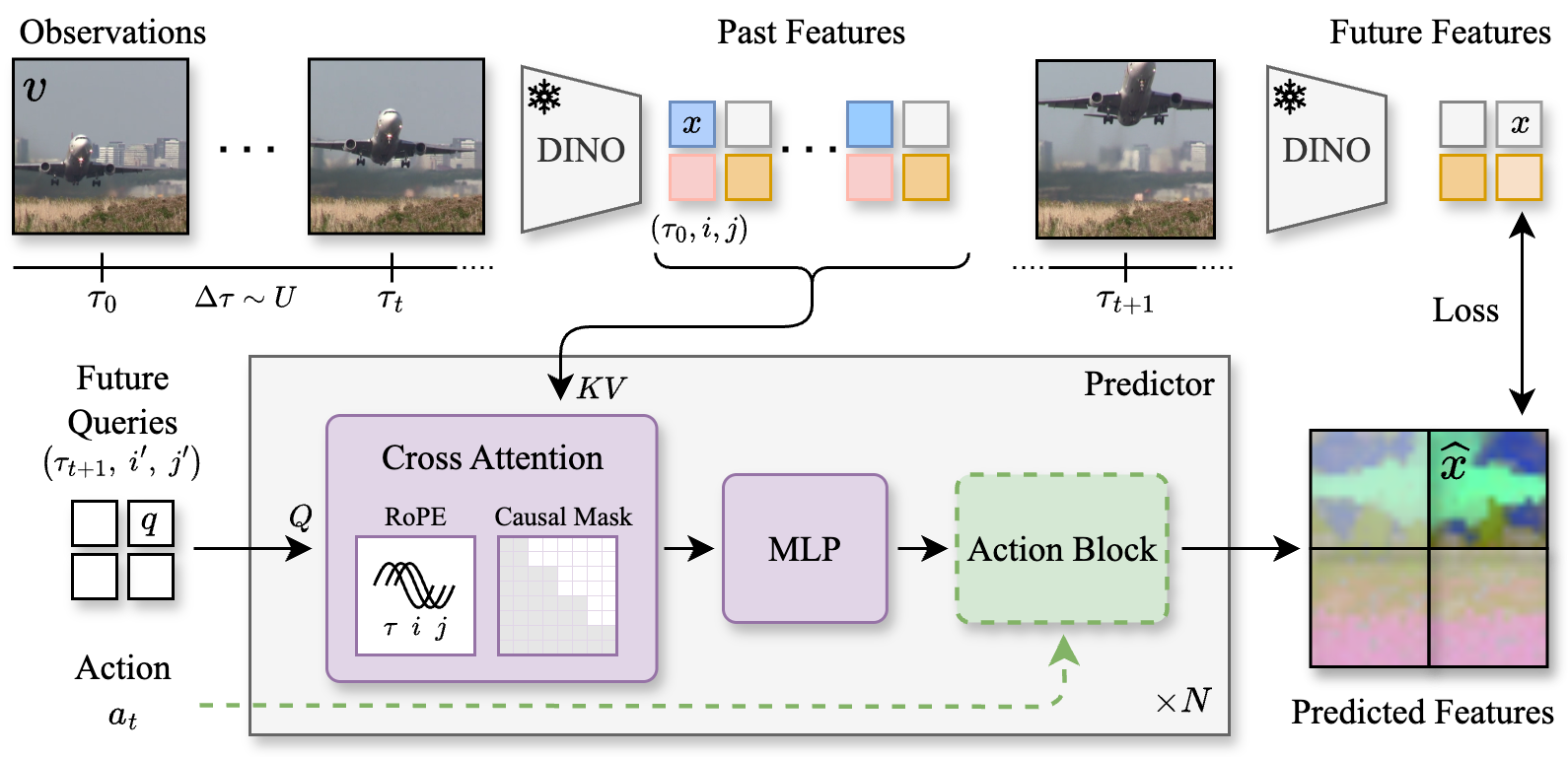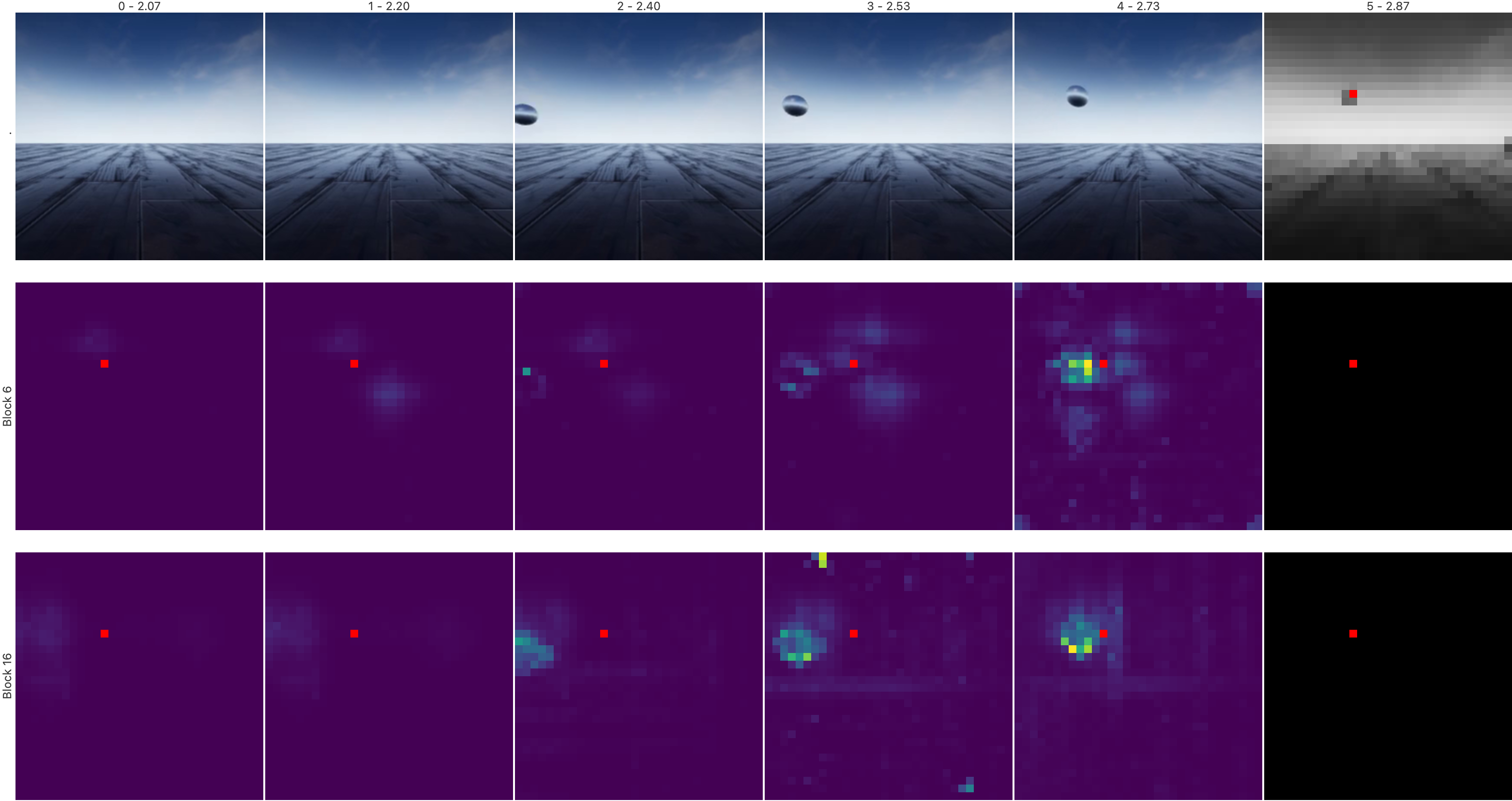Recap: World Models Evolution and JEPA
Published:
The recent buzz around models like Google’s Genie has thrust “world models” into the spotlight, creating a wave of excitement. But what are they, and is the hype justified? At their core, world models are an attempt to build systems that learn the fundamental dynamics of our world—a sort of intuitive physics engine learned from data. The goal is to move beyond language and images to truly understanding how things move, interact, and evolve over time.
This is a monumental step, but the path is filled with massive hurdles that temper expectations. Let’s break down the landscape, from the core challenges to the elegant architectural solutions that are paving the way forward.
The Big Hurdles: Data and Action
Training effective world models is far more complex than training a language model. The challenges aren’t just about scale; they are fundamental to what we’re asking these models to do.
The Scarcity of the Right Data
While we are swimming in a sea of video data, world models need something very specific: videos paired with actions. To truly learn cause and effect, a model needs to know not just what happened next, but why. What action did an agent take to cause the next frame? For a self-driving car, this could be the steering angle and throttle; for a robot arm, the joint torques. Without this action data, a model might become excellent at predicting the next frame of a passive video, but it will struggle to be a reliable tool for an active agent that needs to plan and control its movements.
The Heterogeneity of Action Spaces
A more profound challenge is the sheer diversity of “action spaces.” For Large Language Models (LLMs), the “action” is simple and unified: predicting the next token. But for physical agents, actions are intrinsically tied to their bodies. A drone’s actions (rotor speeds) are entirely different from a humanoid robot’s (joint movements) or a car’s (steering, acceleration). This makes creating a single, universal world model that works across different agents a monumental task. How can one model learn the physics relevant to both a flying drone and a walking robot? This heterogeneity is a significant barrier to the dream of a general-purpose world model.
Two Paths to Building the World Models: Pixel- vs. Latent-Space
As researchers tackle these challenges, two main architectural philosophies have emerged for how a model should represent and predict the future.
The Pixel-space Approach
The most intuitive approach is to predict the future pixel by pixel. Given the current frame and an action, the model generates the entire next video frame. Early models took this path, aiming for high-fidelity, photorealistic predictions of every detail.
However, this method is computationally ravenous. Why? Because most pixels in a scene are irrelevant for understanding the core dynamics. Does a self-driving car need to predict the exact motion of every leaf on a tree to know it should stop at a red light? This obsession with pixel-level detail makes the models incredibly expensive to train and slow to run, as the compute required scales enormously with both spatial and temporal resolution.
The Efficient Abstraction: Latent-space Models
This brings us to the second, more efficient approach: latent-space models. The guiding principle here is simple: why predict every pixel when you can predict an abstract summary of the future? This is the core idea behind the Joint-Embedding Predictive Architecture (JEPA) championed by Meta AI.
Instead of operating on raw pixels, a JEPA model first learns a compressed, abstract representation—or “embedding”—of the world. It then performs all its predictions within this highly efficient latent space. The goal is not to reconstruct the exact image but to predict the future representation. This approach cleverly sidesteps the need to model unnecessary details like lighting, textures, and background noise, focusing only on the semantic essence of the scene.
JEPA in Action: The DINO-World Case Study

The DINO-world model is a fantastic demonstration of the power of latent-space prediction and highlights a brilliant strategy: decoupling. The authors asked: why force one giant model to learn both visual understanding and physical dynamics simultaneously?
Instead, they took a two-step approach:
Leverage a Pre-trained Vision Expert: They start with the frozen visual features from DINOv2, a powerful model already trained to understand the visual world. DINOv2 provides a rich, compressed representation that already captures concepts like objects, depth, and scene layout.
Train a Dynamics Predictor: They then train a separate, smaller predictor model that operates exclusively on these abstract DINOv2 features. Its job is not to predict pixels, but to predict what the DINOv2 features of the next frame will look like.
This decoupling provides a massive boost in efficiency. While a pixel-space model like COSMOS can require 4 to 12 billion parameters, the DINO-world predictor achieves strong results with just over 1 billion.
Critically, this approach works remarkably well. DINO-world demonstrates a solid grasp of intuitive physics and excels at downstream tasks like predicting future object segmentation masks and depth maps—all while operating in its efficient, abstract latent space. This validates the core idea that a compressed representation is sufficient for learning the essential dynamics of the world. Rest of the research seems to be converging: 1) Take a strong video model architecture, 2) Plug-in action conditioning modules, 3) Often use something like Diffusion Forcing to refine the predictions but the core engine remains to operate in this very efficient latent space.


Bottom Line: The Future of World Models
The takeaway is clear: the frontier of world models is rapidly shifting. We are moving away from brute-force, pixel-perfect predictions and toward the elegant efficiency of latent-space models. This JEPA-inspired approach allows for building more scalable and capable models that learn the essential dynamics of our world. But what does this mean in practice, and what challenges remain?
World Models as Flexible Simulators, Not a Replacement for Real Data
So, what is the actual impact for building smarter robots and AI agents? The most immediate role for world models is as powerful, flexible simulators. Unlike traditional simulators like MuJoCo or IsaacSim, which are based on hard-coded physics equations, world models learn dynamics directly from real-world video data. This allows them to capture complex, nuanced phenomena that are difficult to model mathematically.
However, they are not a silver bullet that will eliminate the need for real-world data. For high-precision, safety-critical tasks, traditional physics-based simulators remain more reliable. World models are not perfect, and their predictions can degrade over longer time horizons. The future likely involves a hybrid approach, where agents train on a mix of real-world demonstrations, traditional simulation, and imagined scenarios from a world model 3.
Supporting the Next Generation of AI Agents
Perhaps the most exciting role for world models is not as the policy engine itself, but as a critical advisor to one. Think of a generalist agent model (like a VLA) that needs to decide what to do next. Instead of acting blindly, it can use a world model as a short-term “consequence simulator.” The agent can “imagine” the outcome of a few different actions in the world model’s latent space and choose the one that leads to the most desirable future. In this vision, the world model isn’t the decision-maker; it’s the high-speed imagination that enables better, safer decisions.
The Road Ahead: Big Unsolved Problems
Despite the rapid progress, several major challenges stand between us and truly general-purpose world models:
Long-Term Consistency: While current models can generate consistent short video clips, their predictions tend to drift and lose coherence over longer sequences. Solving this will likely require new architectures, such as state-space models or retrieval-augmented methods, to maintain a coherent history.
Integrating Abstract Reasoning: World models are learning the intuitive “how” of the physical world. However, the abstract “what” and “why”—common sense reasoning—is still the domain of LLMs. A deeper fusion of these two capabilities is needed for models to truly understand and plan complex tasks.
Real-Time Performance: For a world model to be useful for an interactive agent, it needs to run in real-time. This remains a significant engineering hurdle, especially for large models that need to run on edge devices like robots.
Multi-Agent Dynamics: The real world is inherently multi-agent. Modeling the complex interactions, intentions, and social dynamics between multiple independent agents is a massive open problem that single-agent models do not address.
Citation
- Assran, M., Duval, Q., Misra, I., Bojanowski, P., Vincent, P., Rabbat, M., … & Ballas, N. (2023). Self-supervised learning from images with a joint-embedding predictive architecture
- Huang, Siqiao. “Beyond the Hype: How I See World Models Evolving in 2025”. Nemo’s Blog (Oct 2025).
- Baldassarre, F., Szafraniec, M., Terver, B., Khalidov, V., Massa, F., LeCun, Y., … & Bojanowski, P. (2025). Back to the features: Dino as a foundation for video world models
